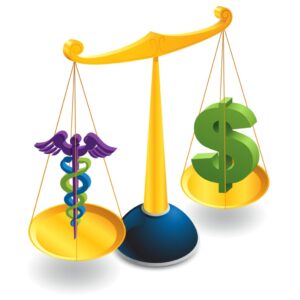At Sutton’s Thriving in Uncertainty event on June 10, 2025, we brought together some of Canada’s most respected voices in leadership, wellness, and workplace strategy. What followed was a day of powerful storytelling, practical tools, and deeply human insights—designed to help employers lead with clarity, compassion, and confidence in a world that’s constantly shifting.
We created The Insight Series—a four-part recap capturing the most impactful lessons from our speakers. Whether you joined us in person or are just catching up now, these summaries are designed to spark reflection, conversation, and action.
The Insight Series Part 2: The Yin-Yang of 10,000 — Martin Chung on Drug Plans, Wellness & What’s Next
In Part 3 of The Insight Series: Lessons in Culture, Leadership & Wellness from Our Speakers, we spotlight the compelling insights of Martin Chung, a nationally respected voice in group benefits and drug plan strategy. With his signature blend of data, humour, and real-world relevance, Martin unpacked the “yin-yang of 10,000”—a metaphor for the tension between cost and care in today’s drug landscape.

Why “Yin-Yang” and Why “10,000”?
Martin used the yin-yang symbol to illustrate the balance between opposing forces: plan member expectations vs. employer affordability, innovation vs. sustainability. The number 10,000 surfaced repeatedly:
- 10,000 steps: our daily wellness goal.
- 10,000 hours: the path to mastery.
- 10,000 feet: the strategic view.
- 10,000 drugs: in clinical trials.
- $10,000: the new normal for high-cost drugs.

Drug Costs Are Rising—Fast
Martin highlighted how drugs once reserved for rare conditions now treat common ones—COPD, asthma, postpartum depression, and even skin disorders—often exceeding $10,000 annually. Weight loss and diabetes drugs are also climbing, with new treatments priced between $5,000 and $10,000 per year.

The Patent Cliff: A Missed Opportunity?
With many high-cost drugs losing patent protection, generics and biosimilars offer major savings. Yet, Martin warned that misconceptions around “mandatory generic substitution” often lead to unnecessary overspending. Employers can save thousands by ensuring plans are designed to take full advantage of these alternatives.

Mental Health & ADHD: The Data Speaks
Martin shared national data showing steady growth in depression drug claims—especially among adults aged 30–49. But the real surprise? ADHD. Claims among adults, particularly women aged 30–49, have surged by 248% since 2020. Martin speculated that disrupted routines post-COVID may be a key driver.

Balancing Coverage and Cost
Weight loss drugs are a hot topic. While demand is growing, only a third of Canadian employers currently offer coverage. Martin urged employers to make informed decisions—whether that means adding, adjusting, or holding off.
Closing Reflection
Martin’s message was clear: we’re in a new era of drug plan complexity. But with the right insights—and the right partners—employers can make smart, sustainable choices that support both their people and their bottom line.
Stay tuned next week for the final, Part 4… Panel on Building Resilient Workplaces
Moderated by Andrea Hansen, this panel featured leaders from Encomp, Prairie Meets, and Ronald McDonald House. Their stories reveal how strategic benefits, mental health investment, and whole-person leadership can transform workplace culture.


